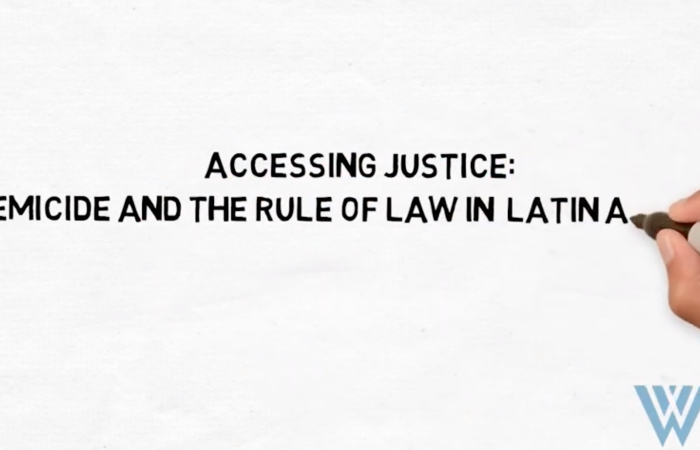Femicide
Femicide is the killing of a woman because of her gender, and it is the gravest form of gender-based violence.
The term "femicide" was first publicly introduced by Diana Russell in 1976 during the International Tribunal of Crimes Against Women in Brussels. Since its introduction into the lexicon of gender-based violence, our understanding of what constitutes femicide has evolved and shifted. Most analysts use a narrow interpretation that limits the use of the term "femicide" to situations involving intimate partner violence or sexual violence; some organizations, however, use a more expansive definition that encompasses systemic issues, such as the gendered impacts of poverty.

Engendering Safety: Addressing Femicide in Mexico
This initiative brings together major voices to 1) raise awareness, 2) explore the driving factors and enabling environment, and 3) outline action items – both for government and for civil society – that could help reduce and ultimately eradicate femicide in Mexico.
Learn moreGood data is a critical step in understanding the full scope and scale of femicide, and at the heart of a sound and sustainable public policy response. Here, we have have gathered and made available below national (and sometimes sub-national) level data on femicide in Latin America.
Learn moreFemicide is the most extreme form of gender-based violence: the killing of a woman because of her gender. Globally in 2021, 137 women and girls are killed by a family member or intimate partner every single day. Here is an infographic to illustrate this data.
Learn morePrevious Project Work
The Wilson Center has been researching and engaging with the topic of femicide for years. One critical area of focus has been the impact in Latin America.

Accessing Justice: GBV and the Rule of Law
In 2020, women’s rights and gender equality are taking center stage. Learn more about the issue and the Wilson Center's initiative examining gender-based violence in Latin America with a focus on its most extreme form, femicide.
Learn More






